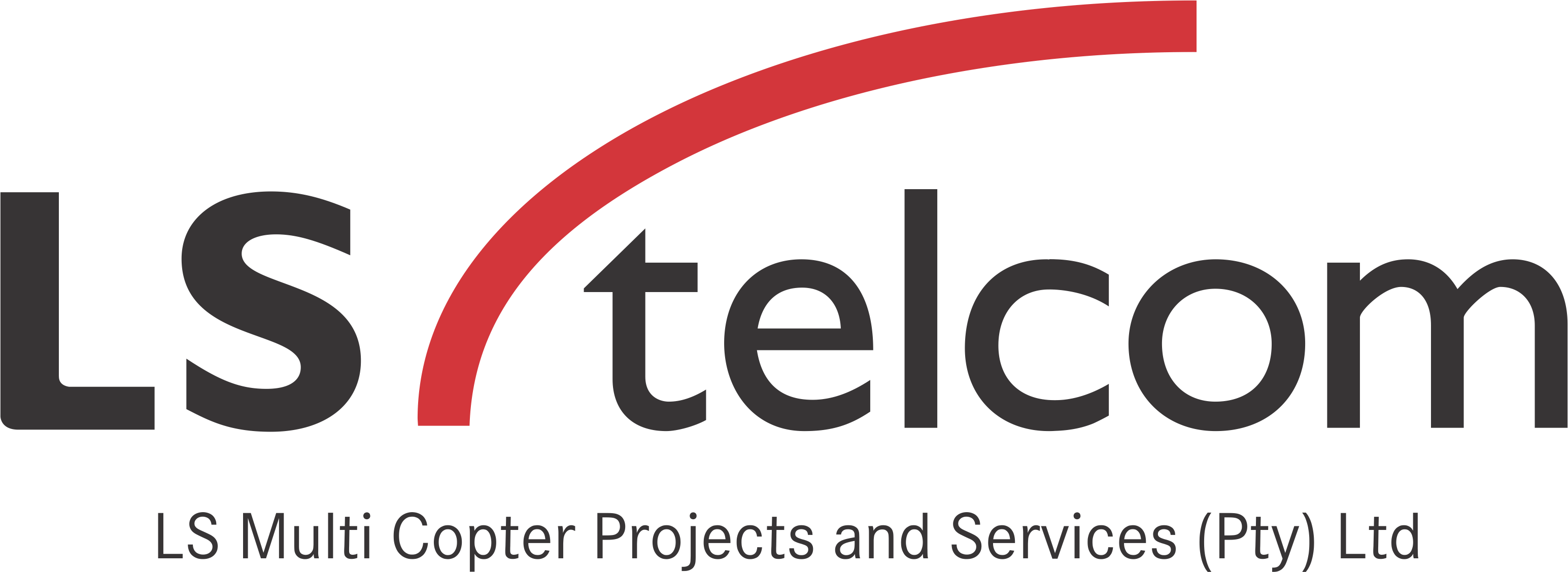RADIO COMMUNICATIONS
Training
Please find below an overview of all available training courses with regards to Radio Communication training:
Please do not hesitate to contact us to discuss your individual training needs.
Get the details about the content and outcomes of our training courses by clicking at the training title
TRAINING FOCUS
This four-day course offers classroom training to delegates interested in understanding the underlying principles that make up the DVB-T2 terrestrial television broadcast system.
Attention is given, but not limited to, COFDM modulation, network topologies (SFNs/MFNs), capacity considerations, a case study and monitoring approaches.
Course Outcomes
▪ Introductory principles of DVB-T2 with specific comparison to its predecessor DVB-T.
▪ Basic elements of DVB-T2.
▪ Technical overview of DVB-T2 technology and aims to provide delegates with knowledge of the inner workings of the system, how data is structured and also how to calculate the system payload capacity.
▪ Practical aspects of DVB-T2 network roll-out through a case study (South Africa) and network monitoring approaches.
▪ Visit operational sites in order to experience examples of installed DVB-T2 network infrastructure.
▪ Delegates will have an opportunity to evaluate the knowledge they gained through short daily written tests.
Prerequisites
▪ Basic understanding of broadcast principles is advisable.
Audience
▪ Delegates with a desire to understand the DVB-T2 technology.
▪ Delegates who are involved with broadcast network deployment, regulation or operations.
| Day | Course Contents |
|---|---|
| Day 1 |
|
| Day 2 |
|
| Day 3 |
|
| Day 4 |
|
Example
On-site Installation and Testing
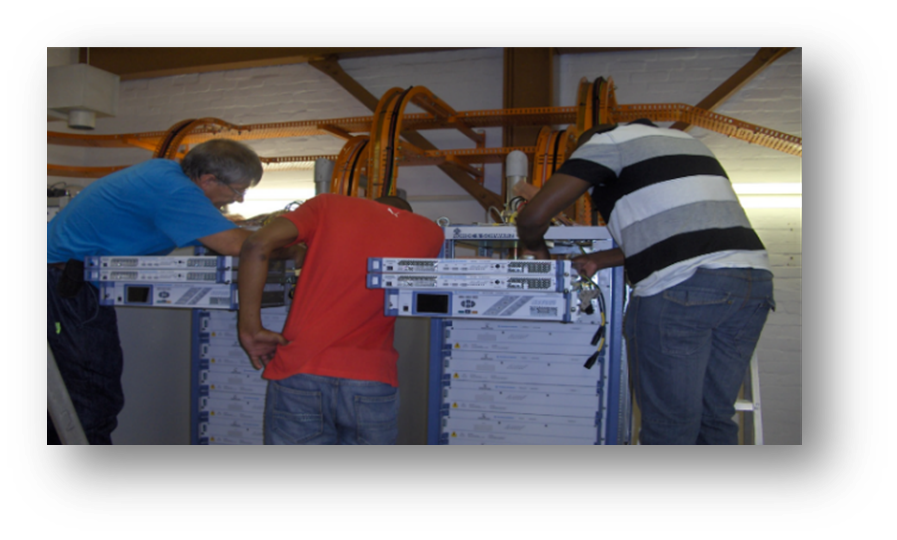
2 x 5kW Liquid Cooled Transmitters
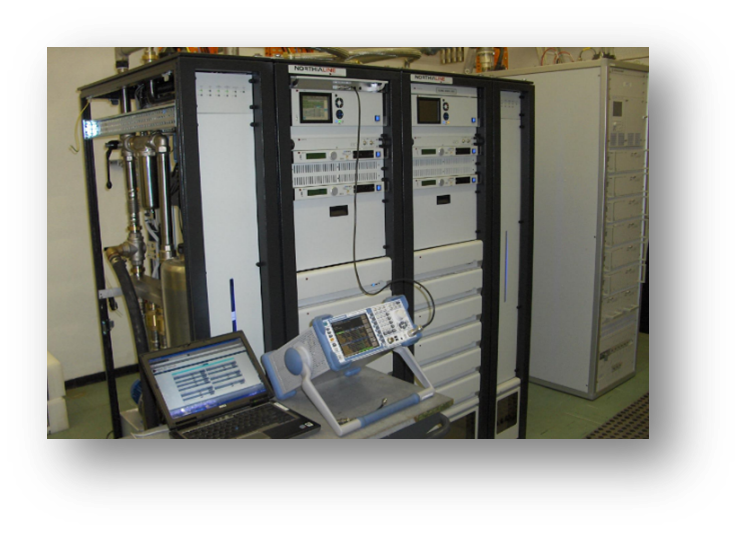
Training Focus
This four-day course teaches delegates the basic broadcast planning parameters and equip them with the necessary knowledge to perform the necessary tasks of a terrestrial broadcaster, signal distributor or regulator.
Course Outcomes
▪ Delegates will be able to use CHIRplusBC on day-to-day tasks
▪ Delegates will have a clear understanding of RF planning principles and interference theory on FM networks, Analogue and Digital Television networks.
Prerequisites
▪ A basic understanding of RF will be beneficial.
Audience
▪ Any regulatory delegate in the broadcasting department.
▪ Any delegate in the field of broadcasting terrestrially
▪ Any signal distributor in the broadcasting field
▪ Any person interested in the broadcasting field
| Day | Course Contents |
|---|---|
| Day 1 |
|
| Day 2 |
|
| Day 3 |
|
| Day 4 |
|
Training Focus
This one-day course offers classroom training to delegates interested in understanding the underlying principles of Broadcast Engineering. It is also a preferred prerequisite for the MictSeta course “Implement fault finding Techniques in Electronic systems”.
Attention is given but not limited to an introduction to electromagnetic waves and FM antennas, introduction to modulation and transmitters as well as principles of combiners.
The training is presented at the offices of LS of SA, Johannesburg.
Course Outcomes
▪ Delegates will have a solid understanding of the fundamentals of broadcast engineering, including electromagnetic waves, wave transmission as well as radiation of radio waves and the propagation of these waves through space.
▪ Delegates will also be able to describe the principle of operation of the various types of combiners used in broadcasting.
▪ Delegates will gain confidence for the course in fault finding techniques
Prerequisites
You must have the following entry level requirements before you can enrol for this module:
▪ Grade 12 or an equivalent qualification/B.Tech Diploma in Radio and Television Engineering
▪ Already competent in:
The use of hand and power tools
Basic soldering and wiring
Using test equipment
▪ Some basic knowledge of the technical workings of a radio station are required, along with an understanding of terminologies applicable to studio and/or transmission working environments
▪ Basic electronics knowledge.
Audience
▪ Delegates with a basic understanding of broadcast principles.
▪ Delegates with a desire to further their understanding of Broadcasting Transmission
| Day | Course Contents |
|---|---|
| Day 1 |
|
Training Focus
This eight-day course (covering theoretical and practical elements) offers classroom training to delegates with limited knowledge and experience of FM Broadcasting Transmission principles and operation of equipment as well as broadcast networks. Alternatively, delegates can opt for a 5-day theory course.
Attention is given to broadcasting basics such as Electromagnetic waves, transmission principles and modulation. The course also covers hardware such as transmitters, combiners, feeder cables and antennas.
The core elements of operating a broadcast network such as preventative maintenance, fault-finding, FM measurement techniques, monitoring and operational issues are also covered as well as visits to operating stations.
Course Outcomes
▪ Introductory principles of FM Broadcasting theory
▪ Workable knowledge of FM Transmitters, combiners and antennas
▪ Able to do basic FM measurement techniques
▪ Knowledge of Linking of sites and studios as well as monitoring and remote control
▪ Workable knowledge of Preventative maintenance and fault-finding
▪ Understand Operational issues
▪ Visit operational sites
▪ Delegates will have an opportunity to evaluate the knowledge they gained through short daily written tests.
Prerequisites
▪ Basic understanding of broadcast principles is advisable
▪ Workable knowledge of Mathematics
Audience
▪ Delegates with a desire to understand FM transmission and to operate FM transmitters as well as FM broadcast networks.
| Day | Course Contents |
|---|---|
| Day 1 | Electromagnetic waves, Wave transmission and RF Principles |
| Day 2 | RF Planning, Coverage |
| Day 3 | Preventative Maintenance |
| Day 4 | Filters/Combiners, Dummy Loads, RF Switches, U-Link Panels, Antennas |
| Day 5 | Linking of sites and studios , Telemetry and Audio Processing Fault-finding and Operational issues |
| Day 6 | Introduction to Measurement and Practical Measurements |
| Day 7 | Practical Measurements |
| Day 8 | Site Visit |
Training Focus
The training course will allow the participant to gain competencies in the theory and practical measurements of analogue/digital broadcast and mobile telephony electronic communication systems.
Course Outcomes
The three-day course will aim to provide the following outcomes
▪ Delegates will gain further insight into the non-ionising effects of electromagnetic radiation (EMF) exposure
▪ Understand the principles of determining the maximal levels of EMF exposure
▪ Overview of measurement techniques as can be applied for analogue (e.g. FM) and digital (DAB/DVB-T2) transmission standards
▪ Overview of measurement techniques used for mobile telephony (e.g. UMTS/GSM) communications
▪ Overview of measurement techniques used for LTE and TETRA communication systems
▪ Providing the basis and appropriate strategies for EMF measurement and reporting
Prerequisites
Delegates will be required to demonstrate an advanced understanding of both analogue (AM/FM)/digital (DAB/DVB-T2) broadcast standards, as well as those used for mobile telephony (GSM-E900/UMTS/LTE) and TETRA communication standards. Delegates would therefore need to be in possession of a suitable Engineering Degree and/or National/NH Diploma/B.Tech in the appropriate field
Audience
This course is primarily aimed at technical personnel at Communication Regulatory Authorities and Service Providers who are required to perform EMF safety measurements within public spaces and/or transmission facilities for compliance purposes. The Narda SRM-3006 narrow-band analyser forms the basis of the practical measurements and access to such an instrument is strongly recommended.
| Day | Course Contents |
|---|---|
| Day 1 | Standards I – Exposure Limits and Present Status of Bio-Electromagnetic Research
|
| Day 2 | Standards II – Measurement standards
|
| Day 3 | Measurement standards III (continued…)
|
Training Focus
This one-day course offers classroom training to delegates interested in understanding the underlying principles of FM sound broadcasting.
Attention is given but not limited to the basics of FM modulation, analogue and digital audio, basic transmission infrastructure and the Nautel VS Series FM transmitters.
The training is presented at the offices of LS of SA, Johannesburg.
Course Outcomes
▪ Delegates will have a solid understanding of the fundamentals of FM sound broadcasting
▪ Delegates will gain confidence to set up and operate the Nautel VS Series FM transmitters
Prerequisites
▪ The delegate/s should preferably work at an existing radio station – preferably within a technical and/or production capacity.
▪ Some basic knowledge of the technical workings of a radio station are required, along with an understanding of terminologies applicable to studio and/or transmission working environments
▪ Whilst not essential, some basic electronics knowledge could be helpful.
Audience
▪ Delegates with a basic understanding of broadcast principles.
▪ Delegates with a desire to further their understanding of FM Sound Broadcasting
▪ Delegates who are involved with broadcast network deployment and day-to-day operations at a radio station.
| Day | Course Contents |
|---|---|
| Day 1 |
|
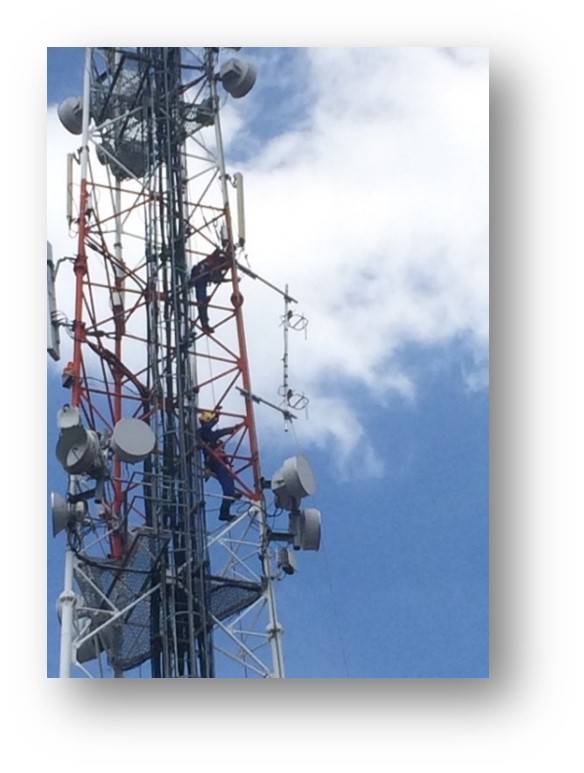

Training Focus
The training course will give the participant a good understanding of radio network planning as addressed detailed in the “Course Outcomes” section.
Course Outcomes
The three-day course will address the following topics:
▪ Introduction Radio Network Planning
▪ Coverage Planning
▪ Cell Structure Planning
▪ Traffic Planning
▪ Frequency Planning
Prerequisites
Basic engineering understanding of radio network planning is advisable.
Audience
Delegates with a desire to understand radio network planning.
| Day | Course Contents |
|---|---|
| Day 1 | Introduction Radio Network Planning
|
| Day 2 | Coverage Planning
|
| Day 3 | Traffic Planning
|
Training Focus
This training course is presented as a three-day (theory) or a four-day (theory and practical) course. The three-day theoretical training course provides trainees with a strong background in microwave transmission and link planning for modern point to point Digital Microwave Radio.
The course also covers in detail all important aspects of radio propagation, such as multi-path fading, free space loss, reflection and refraction.
Microwave links are required to perform as the backhaul of the network of all the mobile technologies today, with an ever increasing demand for capacity. If designed appropriately the links can deliver this performance. The course offers knowledge of planning microwave links. Topics covered are microwave devises, typical antennas, feeder cable, path profiles, line of sight, antenna diversity, modulation schemes and frequency bands.
The four-day course offers an additional day to provide practical knowledge of planning microwave links. The trainees will perform an installation of a microwave link for which they have done the planning. Measurements of the incoming signal will be performed on the link once installed. The measured results will be compared with the results obtained from the planning. This can also involve fault finding if the figure of the planned link does not reflect the measured signal level of the installed link.
Course Outcome
After completion of this course, participants will:
▪ Understand essentials of microwave transmission and link design for point to point systems
▪ Become familiar with equipment used and understand different network topologies
▪ Be able to improve and optimize network performance and quality
▪ Understand how to use a microwave link planning tool (CHIRplus_TC)
Prerequisites
Microwave link planning experience
Audience
Entry to mid-level Microwave link planners
| Day | Course Contents |
|---|---|
| Day 1 | Introduction
|
| Day 2 | Power Budget
|
| Day 3 | Link Planning in CHIRplus_TC (Practical Exercises)
|
| Day 4 | Practical Training |
Training Focus
The one-day course provides the participant with a clear overview of the main drivers and strategy behind the development of 5G with its benefits, performances, markets and the management of the 5G spectrum.
Course Outcomes
After completing the course, participants will have a clearer view of how the evolution towards a 5G standard is leading the chase to identify new spectrum, which spectrum bands are under consideration, and whether 5G might mark the end to the hunger of mobile operators for more mobile spectrum.
Prerequisites
Basic knowledge of spectrum management and mobile network concepts and technologies.
Audience
Those who need to better understand the spectrum implications of 5G technologies, whether from a regulatory, commercial or technical perspective.
| Day | Course Contents |
|---|---|
| Day 1 |
|
Training Focus
This one-day course offers classroom training to delegates interested in understanding the underlying principles of digital sound broadcasting (DSB).
Attention is given but not limited to DSB (encompassing DAB+ and DRM) fundamentals, advantages/disadvantages, basic infrastructure, requirements for frequency bands and planning of networks.
Course Outcomes
▪ Delegates will have a solid understanding of the fundamentals of DSB.
Prerequisites
▪ The delegate/s should preferably work at an existing radio station – preferably within a technical and/or production capacity.
▪ Some basic knowledge of the technical workings of a radio station are required, along with an understanding of terminologies applicable to studio and/or transmission working environments.
▪ Whilst not essential, some basic electronics knowledge could be helpful.
Audience
▪ Delegates with a basic understanding of broadcast principles.
▪ Delegates with a desire to further their understanding of DSB.
▪ Delegates who are involved with broadcast network deployment and day-to-day operations at a radio station.
Course Structure
One day course
▪ Overview of DAB+ and DRM technologies
▪ Advantages/disadvantages of DSB
▪ International status quo
▪ Current difficulties with implementation of DSB
▪ Frequency bands for deployment of DSB
▪ Planning of DSB networks
▪ Requirements for the frequency plan for DAB+ and DRM deployment
▪ Transmission Infrastructure requirements
| Day | Course Contents |
|---|---|
| Day 1 |
|
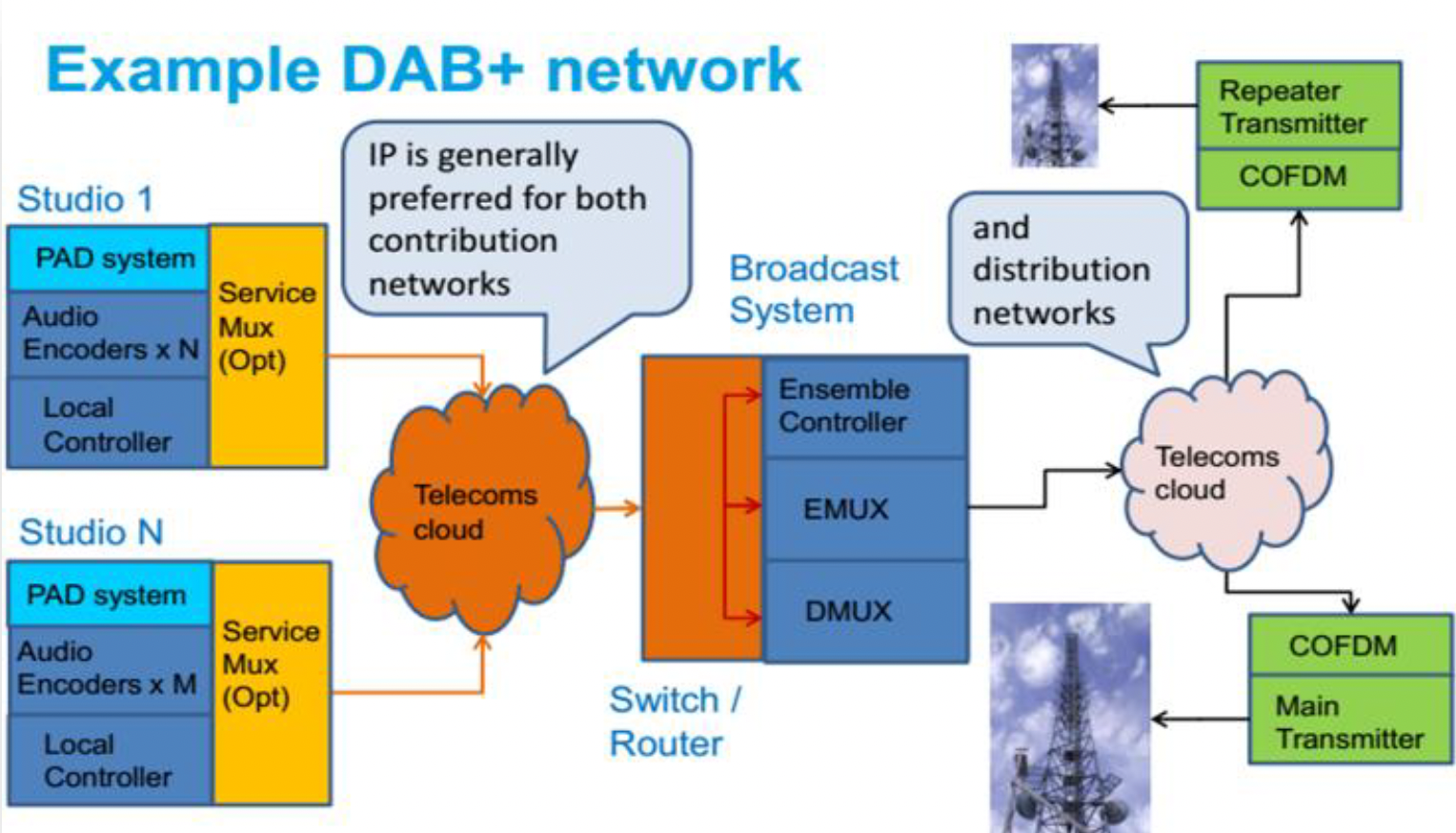
Training Focus
The training course will provide training to delegates interested in understanding the various systems and sub-systems that constitute a modern Digital Television Broadcasting Head-End.
The subject matter covers, but is not limited to: Digitizing video and audio, digital compression, transport streams and the analysis thereof.
Course Outcomes
Delegates will have a good understanding of a Digital Television Broadcasting Head-End and its various sub-systems.
Prerequisites
Basic understanding of broadcast principles is advisable.
Audience
▪ Delegates with a basic understanding of broadcast principles.
▪ Delegates with a desire to understand the principles behind modern Digital Television Broadcasting Head-Ends.
▪ Delegates who are involved with broadcast network deployment, regulation or operations.
| Day | Course Contents |
|---|---|
| Day 1 |
|
